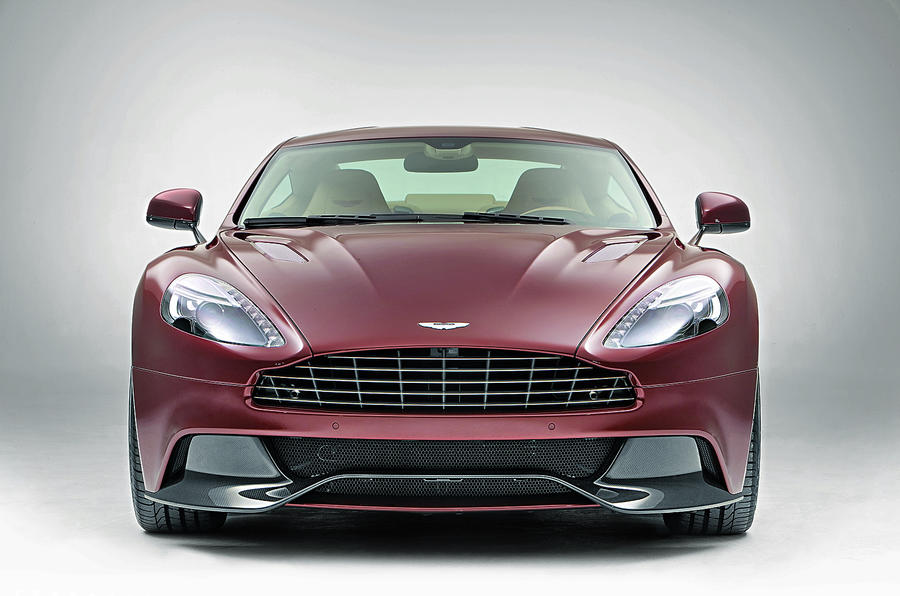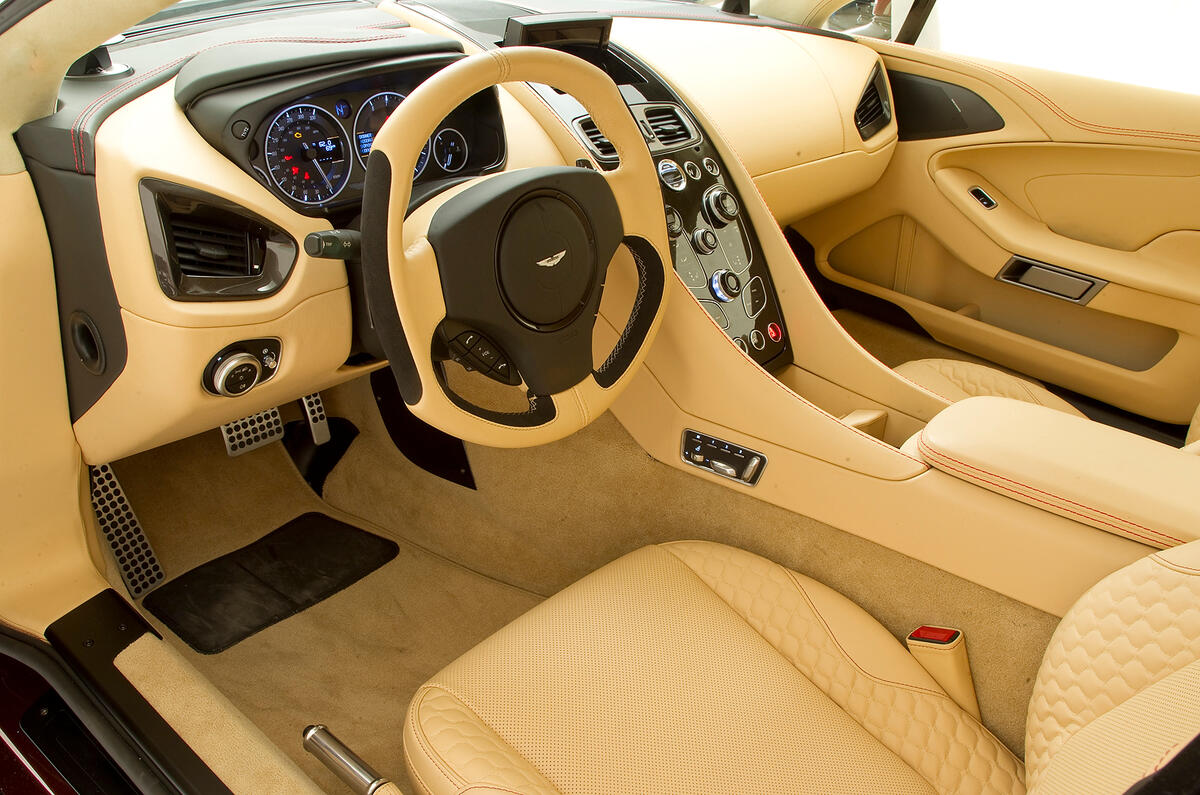The new Aston Martin Vanquish has made its world debut at the Goodwood Festival of Speed. With the £190,000 Vanquish — a brand-new ‘regular’ flagship, as opposed to the super-exclusive One-77 and Zagato V12 models — the company is preparing itself for a new era of model development while continuing to stress that evolution, not revolution, will always be its guiding philosophy.
A clear sign of evolution is the use of the Vanquish name for the new model, which is due to be launched in the summer with the first cars ready for delivery early next year. The original Vanquish, shown as a concept in 1998 and built between 2001 and 2007, was the first Aston to signal a move away from traditional construction methods.
This new edition introduces a much stiffer ‘Generation 4’ version of the adaptable ‘VH’ bonded aluminium monocoque chassis that arrived with the Aston Martin DB9 in 2003. It also introduces a completely re-engineered version of Aston’s 6.0-litre V12 engine, with variable valve timing, new heads, bigger inlet valves and throttle bodies, and new manifolds that boost power and torque. Most importantly, the revised engine meets forthcoming US clean-air legislation.
For the first time in a series-production Aston, the outer panels are all formed in carbonfibre. The body design presents a fresh face because of the influence of the £1.2 million One-77, and is the culmination of a three-year project led by Miles Nurnberger, Aston’s chief exterior designer.
Nurnberger acknowledges the car’s use of “simple” existing Aston cues (low nose, ‘moustache’ grille, steeply raked screen, exaggerated rear haunches), but describes the car as “more deeply sculpted” than previous Astons. The car sits on a skirt of exposed carbonfibre in reference to its all-carbonfibre body construction. It features an integral rear wing specifically designed to look — on the orders of Aston chief Ulrich Bez — as if it was impossible to make.
Nurnberger says that the extra sculpting and radically waisted shape of the Vanquish’s 2+2 body will make the car look quite different from existing Astons on the road, although it takes care to maintain the marque’s fundamental character. “An Aston always wears a suit,” he says. “It is assertive, not aggressive; powerful but polite.”
Inside, the Vanquish gets an all-new cockpit design, still with a prominent centre stack, but with a suite of new hardware, including lighter and smaller screen, ventilation and hi-fi controls. The DB9’s allegedly jewel-like instruments, seen in most Astons since 2003, get a new, quieter and more technical-looking set of analogue dials, which are much clearer to read. The fascia ‘volumes’ have been reduced and moved 20mm away from occupants to give more room and a feeling of airiness without losing the tailored feel. Aston is keen to keep the bespoke nature of its trim, with hand-stitching, rich colours and classy materials, but beyond that the list of possible variations is almost limitless.

























Join the debate
Add your comment
Bond's new ride
I pretty sure now that 007- James Bond will be driving this new Vanquish, in the new Skyfall movie.
The configurator on the Aston Martin website shows a colour called Skyfall Silver! Seems a bit of a coincidence to me... There is nothing on the website to say this will be Bond's new choice of wheels but they didn’t blatantly advertise the DBS until the film was screened.
Top Speed
So, it has 43 more BHP than the old Vanquish S. but is slower by 19MPH, why? It's lighter than the old S too.
Not enough power for the
Not enough power for the money